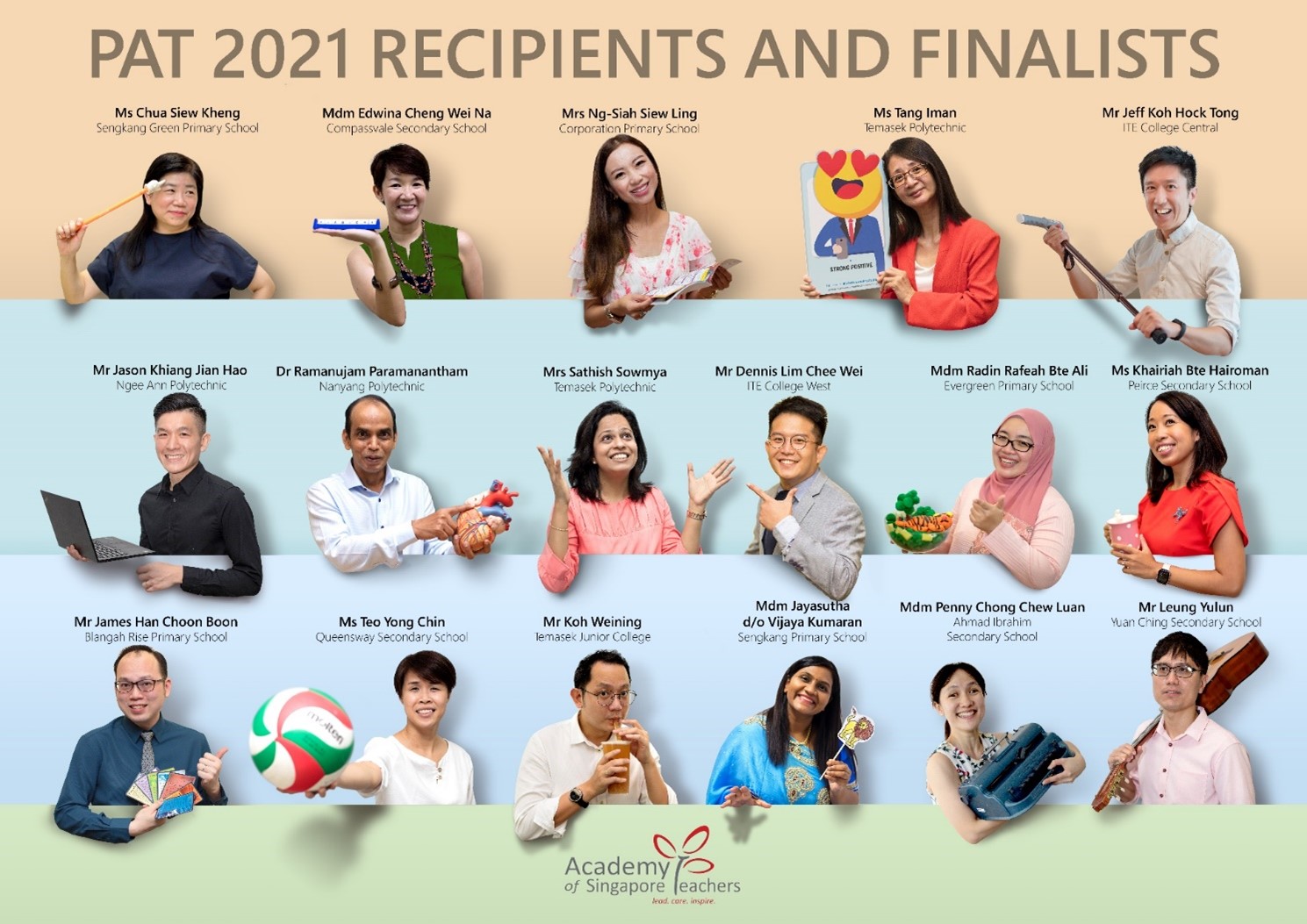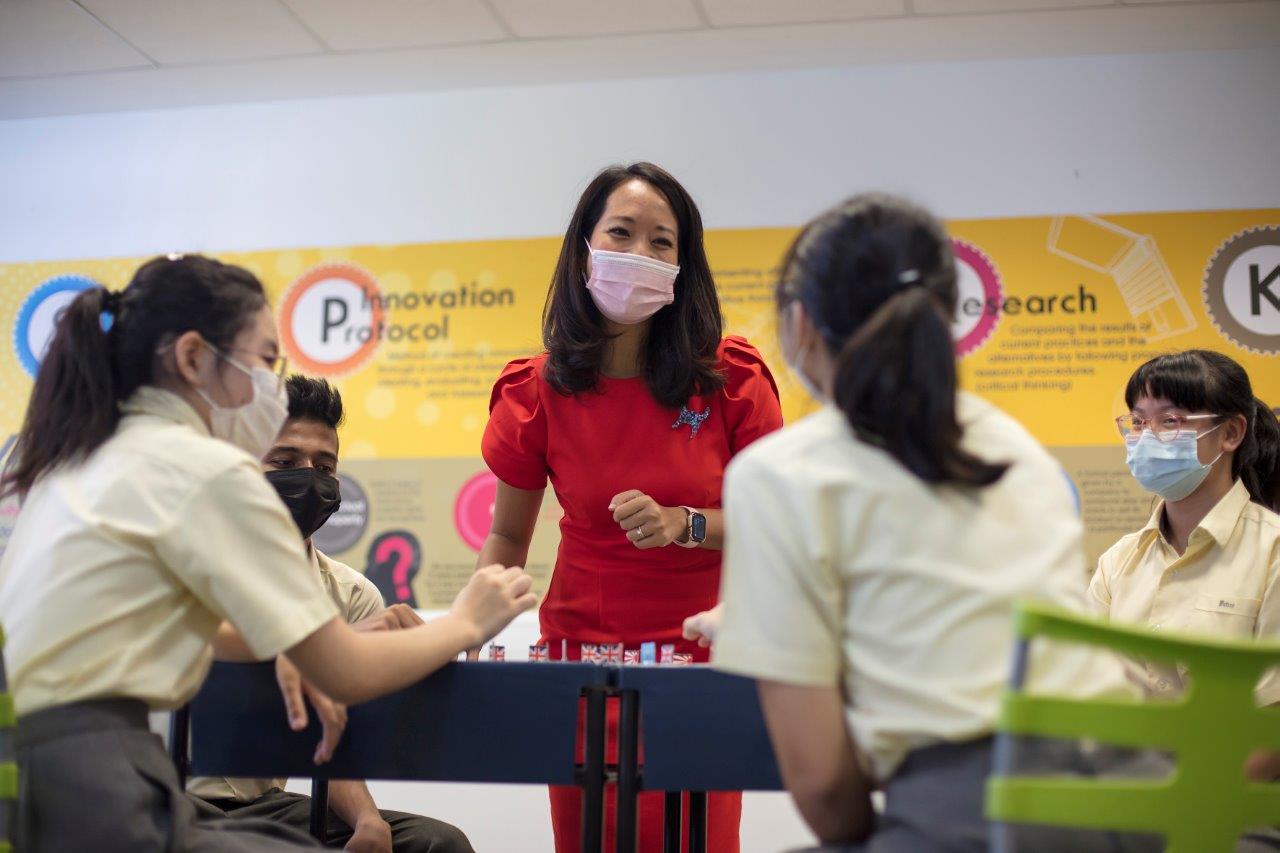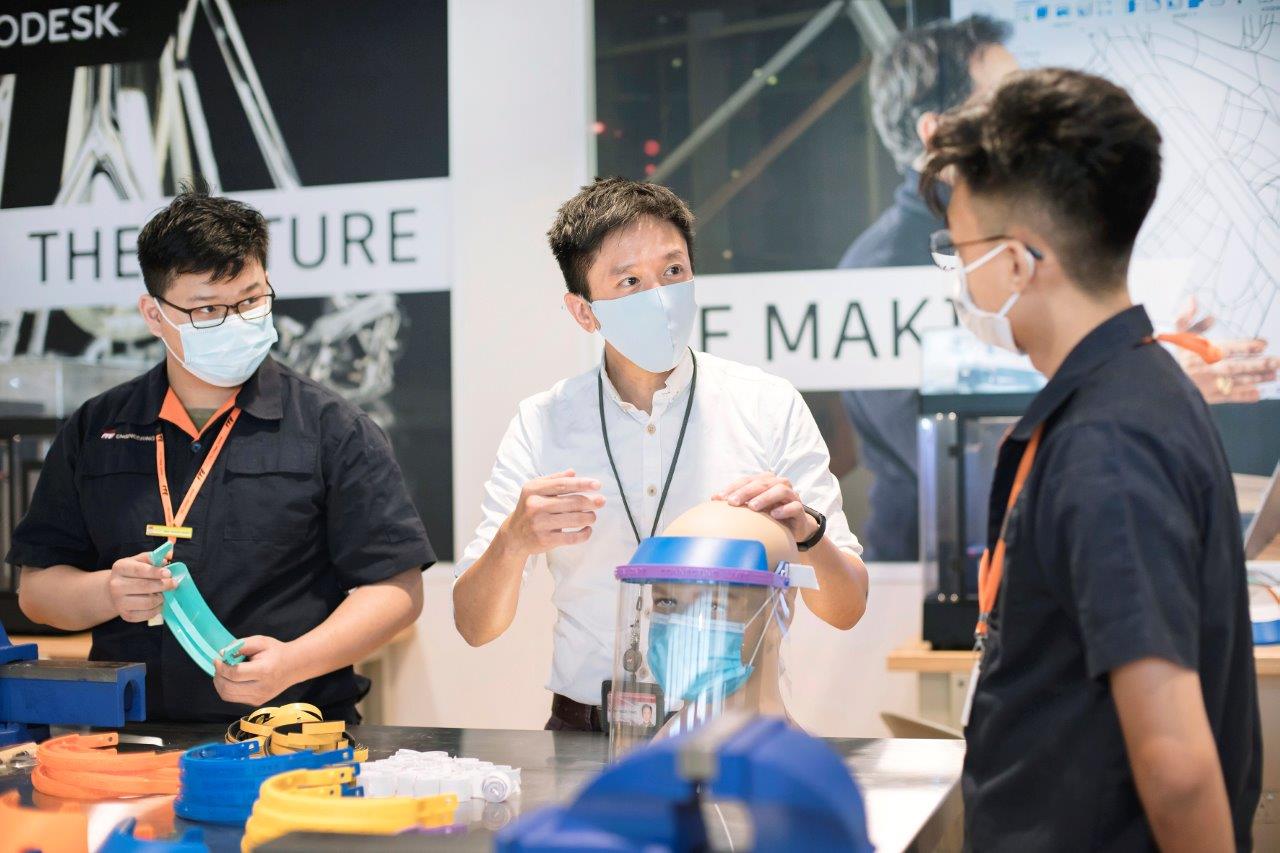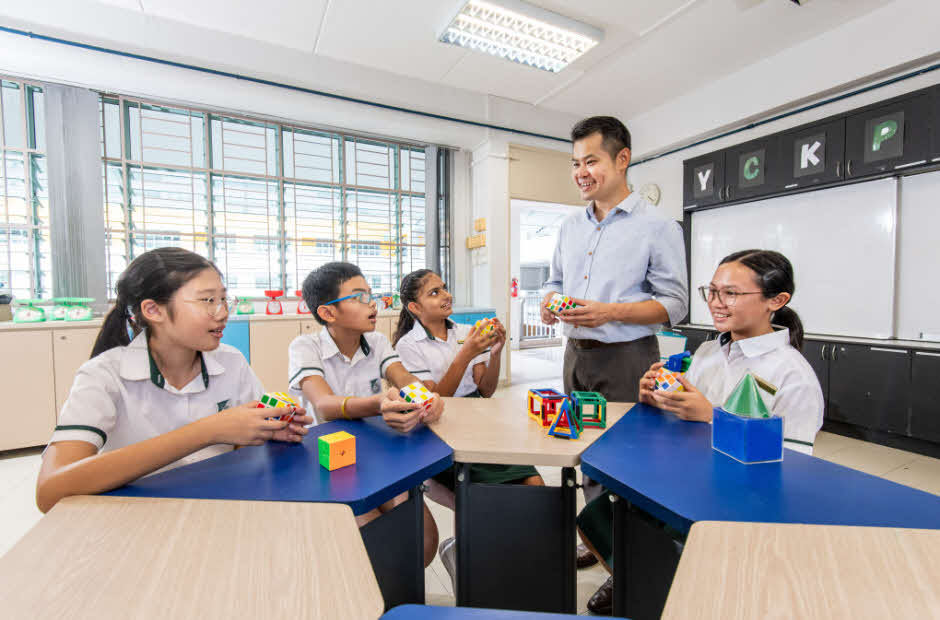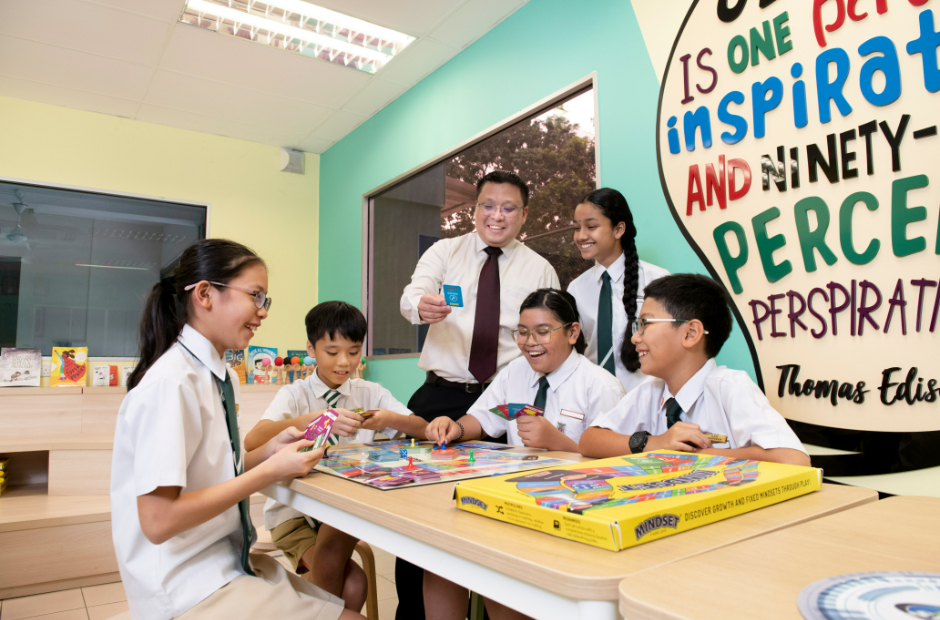Khairiah Bte Hairoman, Peirce Secondary School, President’s Award for Teachers 2021 Recipient
It was a beautiful day. This was pre-Covid, and some 38 Secondary 4 students from Peirce Secondary School were out on the school field. Everyone had a paper airplane in their hands and a cheeky grin on their faces.
At the cue from their History teacher Khairiah Bte Hairoman (also known as Khai), they gleefully tossed their planes into the air, hoping their own plane would glide the longest distance. Once satisfied, they picked up another plane that wasn’t theirs, unfolded it, and read its contents.
The activity may seem puzzling or even frivolous to passers-by. However, what the students had written on their paper airplanes were actually their personal responses to a question raised by Khai in class earlier: “Do you think America did the right thing in dropping the atomic bombs in Japan in 1945? Why or why not?” By reading someone else’s response, the students gained a perspective that was different from their own.
Khai, who has been teaching History and Social Studies to upper secondary school students for some 17 years, said, “A humanities education allows you to gain multiple perspectives and develop empathy by looking at history, and by discussing contemporary societal issues.”
The power of storytelling
Personal stories are a key part of Khai’s lessons. It’s one of the ways in which she brings her subjects to life.
For example, when discussing the topic of racial prejudice in Singapore, Khai would recount how she and a fellow Malay-Muslim friend were once called out as terrorists by a group of American boys on a public bus in Singapore.
She shared, “My students are always shocked when they hear this story. I said, ‘Why should you be? The incident happened in the aftermath of 9/11, when tensions were running high all over the world.’”
In discussing such anecdotes, Khai’s students are able to draw connections, and see how events in other countries can have an impact closer to home. “It’s always about putting things in context to facilitate understanding,” Khai emphasised.
She similarly encourages her students to talk about their personal experiences. To make sure that the class discussion is never dominated by a few vocal students, she employs creative strategies that encourage mass participation, such as the paper airplane activity, a debate, or even a quiz.
These varied activities also double up as informal assessments to help Khai motivate different types of learners.
At times, even art is involved. “Once, after going through the Mukden Incident and the Marco Polo Bridge Incident of the 1930s, I got my students to draw their understanding of the two incidents,” Khai shared. “This allowed the more visual learners in the class to experience a sense of achievement as they could articulate their thoughts on a platform that is more accessible and comfortable for them.”
Khai also occasionally invites external parties to share their perspectives. For example, for a Secondary 3 project on migrant workers in Singapore, Khai invited a representative from the Migrant Workers’ Centre to give a talk during school assembly.
The session reached a turning point when video interviews conducted with migrant workers were shown.
Khai elaborated, “Some of the workers broke down during the interviews. They shared that they feel hurt whenever people walk past them and cover their noses, or that they have to send every earned dollar back to their families.
“It was an eye-opener for the students because they were able to see migrant workers as real people facing real issues for the first time.”
The session impacted the students so much that many of them started asking if they could do more for the migrant workers. With guidance from the teachers, the students suggested organising a donation drive, and every class in the cohort contributed daily necessities.
Sparking curiosity, controversy and conversation
Where appropriate, Khai also likes to employ a dose of controversy to grab her students’ attention and engage them in lively discussion.
For example, when teaching her class about the Korean War, the lesson would open with a video on Otto Warmbier, the American tourist who was arrested for allegedly stealing a propaganda poster in a hotel in North Korea. She would then segue into talking about the Trump-Kim summit in Singapore and help her students see the significance of the meeting against the backdrop of the Warmbier incident and the Korean War.
Similarly, Khai doesn’t shy away from discussions initiated by her students. Instead of dismissing someone who makes an off-the-cuff remark, she would guide the student to support his or her point of view by using questions such as “Why do you think that is so?”, or “What makes you say that?” By doing so, she is able to maintain a classroom environment where open conversations are encouraged.
“I would like to think that anything can be discussed during my classes. The knowledge we impart is essential, but what’s equally important are the stories shared in the classroom and the student reflection that follows,” Khai said.
Kindness, empathy, and learning trips overseas
Beyond lesson plans and pedagogies, Khai believes that positive relationships are the bedrock for keeping students motivated and participative in class.
“When students misbehave or act out in class, it is usually because there are underlying issues. So I make it a point to get to know every single one of my students and their families. Family background is crucial for helping me to better understand my students,” she said.
Khai speaks from personal experience. She grew up in a single-parent family and faced financial difficulties in her growing-up years. Revision for her O-level examinations took place mostly at the void deck because her family didn’t have a place of their own. It was those trying years that made Khai realise that education is key to breaking out of the poverty cycle.
She shared, “When I was young, I always wanted to travel, but I never had the opportunity to do so. Now that I’ve been to some 30 countries, I want to do the same for my students. Even though bringing a large group of students overseas is no mean feat, I would always organise an overseas learning trip every year.”
Over the years, Khai has brought her students to various countries. From Bali and Vietnam, to Taiwan and Sri Lanka, each trip has opened the eyes of her students to a world outside of their own. Besides appreciating the historical significance of these places, Khai also teaches her students to develop empathy for others by getting them involved in community work during these trips.
As the saying goes, “Experience is the best teacher.” By offering her students myriad experiences, Khai opens up multiple windows to the world.
